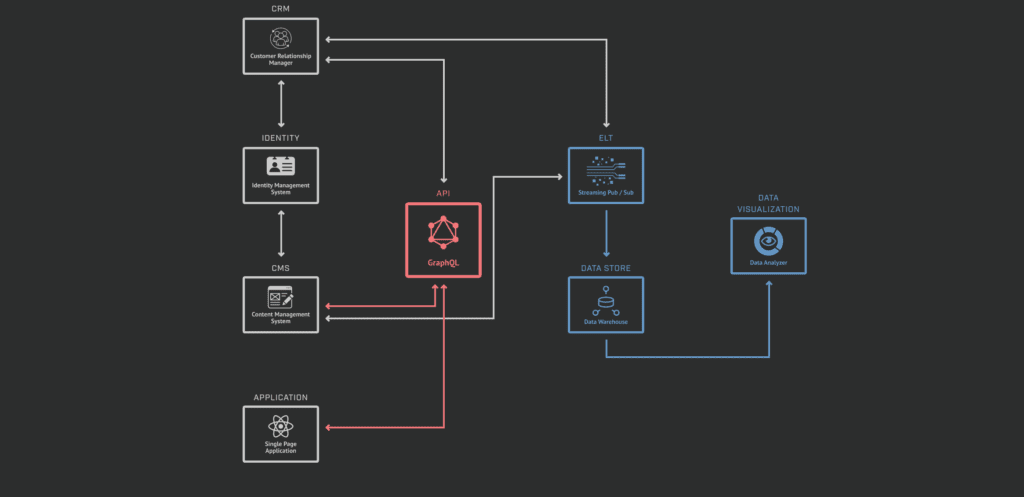What is a headless CMS?
“Headless” content management systems (CMSs) are an increasingly popular choice for websites and applications that need more flexibility and power than a traditional CMS configuration can provide. In a headless configuration, the back-end system for content management (e.g. WordPress or Drupal) is retained, but the front-end display is served by a custom application (often built in JavaScript) instead of the CMS’s included templates. Content is delivered via an API (application program interface), and tools such as GraphQL can be used to act as a middleware between the API and the front-end user experience.
Business benefits
What are the advantages of a headless CMS? Flexibility and power:
- A headless CMS makes it easier to share your content in a variety of contexts, with your back-end APIs able to feed an array of websites, mobile apps, partner integrations, chatbots, virtual assistants and IoT smart devices.
- Similarly, the front end application of your HCMS is designed to incorporate content from any source with a well-formed API. Integrate events from Meetup or Eventzilla. Integrate customer experience data from Salesforce, HubSpot or Marketo. Start your mobile app with your front-end UX components ready to snap into place.
- Deliver a unique look and feel. WordPress and Drupal templates are ubiquitous but tightly bound to the CMS which can also bound your design. Headless CMS implementations, freed from these constraints, deliver an experience that is powerfully fit to your brand.
- A headless content management system is more secure. Separation of the front end and back end creates a defense that many traditional attack vectors can’t cross. You can further fortify your data with an encryption layer or VPN without affecting your front-end customer-facing experience.
- HCMS improves stability and performance by avoiding a single point of failure. Your front end application can be more precisely tuned for performance, even to the point where it keeps serving customers in cases where the back-end CMS is temporarily unavailable.
Headless Content Management Model
We’ve broken down the Headless Content Management Model in more detail for you. Interact with the diagram below and click on any component to unlock more details.
Learn more
We have an entire blog post series about Headless Content Management Systems:
- What Is a Headless Content Management System (HCMS)?
- Is a Headless Content Management System Right for My Company?
- What are the Pros and Cons of a Headless CMS Versus a Traditional CMS?
- What Is The Field of Headless CMS Options?
- Deep Dive into Headless CMS Back-End Options
- Deep Dive into Headless CMS Front-End Options
- Developing a Blueprint for Your Headless CMS Strategy
A headless CMS is not for everyone
There are some drawbacks to headless content management systems to consider. A headless CMS entails more upfront costs in part due to the complexity of setup. Decoupling the front end from the back end means that some features taken for granted in a traditional setup will need to be “re-coupled” manually. Some plugins and modules are far more headless-ready than others. Weighing the upfront implementation costs against your long-term strategy is essential.
Is HCMS right for you?
We’d be delighted to help you find out (we love an excuse to geek out on this topic). To learn more about whether a headless CMS is a fit for your organization, website or application, contact us:
